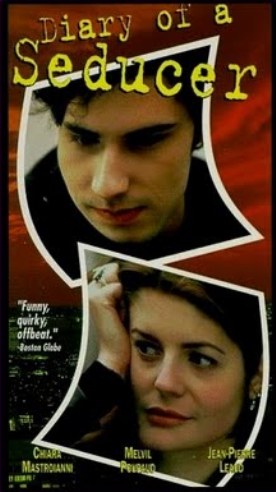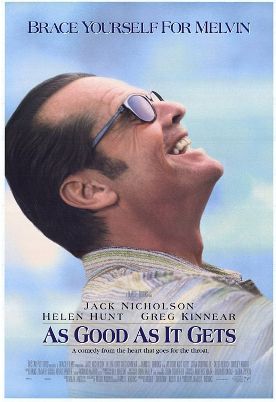Diary of a Seducer (Le Journal du Séducteur)
The Diary of a Seducer, by Dani le Dubroux, is a clever little movie based loosely on Kierkegaard’s Diary of a Seducer. The diary in this case exists in two forms. One is as a French translation of Kierkegaard which Grégoire (Melvil Poupaud), a young philosophy student who lives with his crazy grandmother, Diane, a grande dame of the stage, keeps lending to girls and which mysteriously makes them fall in love with him. The other is as a diary kept by Sebastien (Mathieu Amalric), a young man who is determined to seduce the gorgeous Claire (Chiara Mastroianni) and who records his comically unsuccessful strategies for doing so. Claire who is also a student (of psychology) is the link between the two, since while she is being pursued by Sebastien, she is lent the magic book by Grégoire and duly falls for him. Her pursuit of him echoes Sebastien’s of her, while Grégoire’s seeming indifference to her matches her own for Sebastien.
The plot is far too long, ingeniously complicated and fantastical to recount here, but it involves, in the style of all the best French films, a murder and a secret and a body in a freezer. This all seems to me just a bit labored. The best parts of the film concern the hapless Sebastian’s attempts to be a seducer. To balance his failures with Claire, he thinks he sees the beginnings of a fancied success with her mother — which leads to a scene of such cringe-making embarrassment for poor Sebastien that no young man is ever likely to forget it.
There are several other good bits, including a hilarious cameo by the great Jean-Pierre Léaud (the late François Truffaut’s unforgettable Antoine Doinel in half a dozen films) as Grégoire’s former French teacher who is obsessed with Grégoire’s grandmother and who is nearly as eccentric himself. Like nearly everything else here, he points up the extent to which this is a film about obsession and its relation to love, to violence, and to our sense of self-identity. We define ourselves by the people we obsess about, and the magic volume of Kierkegaard can be seen as a kind of modern updating of the image of cupid’s arrow, since we are at the mercy not so much of the people we love as of the malign or happy fate which has thrown us together with them in spite of ourselves.
At the same time, it is a film which stresses the comic side of love as of obsession. As in The Designated Mourner, discussed above, the possibilities of despair are always just beneath the surface. But here they are played for laughs, which is really what they deserve. In this film, those who would despair are the old people, the crazy grandmother and the manic French teacher, both of whom threaten suicide, while the young ones, who understand nothing else about what is happening to them, at least know self-dramatization when they see it. As Grégoire says of his grandmother’s extravagant fantasies: “She relives scenes she has acted in; she confuses plays and reality.” If that doesn’t make her a master-figure for our times, I don’t know what does.
This is an excellent idea for a movie, but beyond it I confess that the film’s point largely eluded me. Grégoire is too ambiguous a character — half love-sick boy, half Mephistopheles — and Claire seems to be the only one who can live with her obsession — until, confusingly, she fades out of the story as it nears the end. As in many French films, this development seems to be informed by a fear of being too positive, too gratuitously happy, so it ends on a note of mere oblivion as Claire’s amnesiac psychiatrist, who has also fallen victim to obsession, tries to remember what hit him. It seems to me rather a cop-out after the brilliance which has gone before.
Discover more from James Bowman
Subscribe to get the latest posts to your email.






